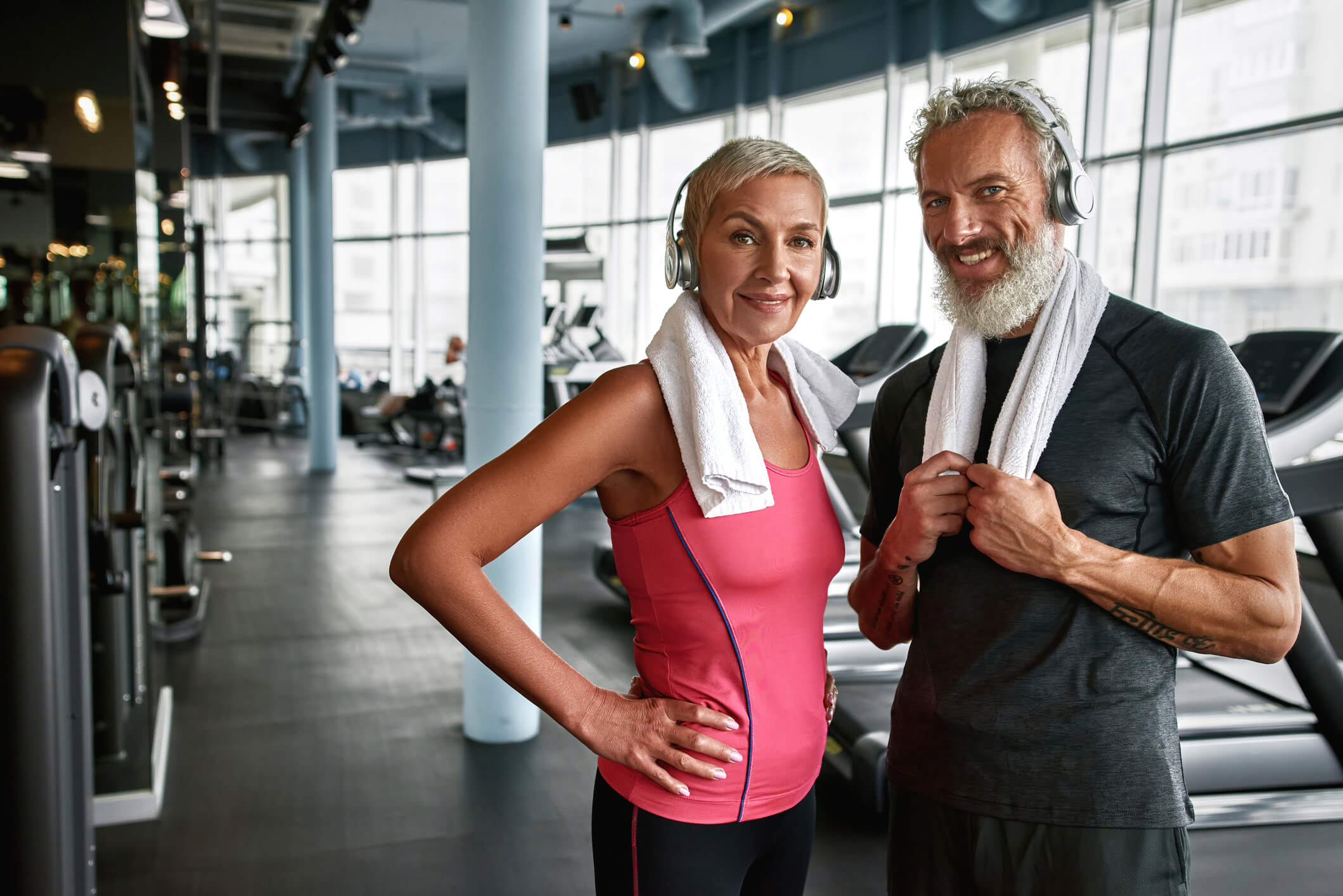
What is Anti Aging? 10 Aging drivers and how to address them
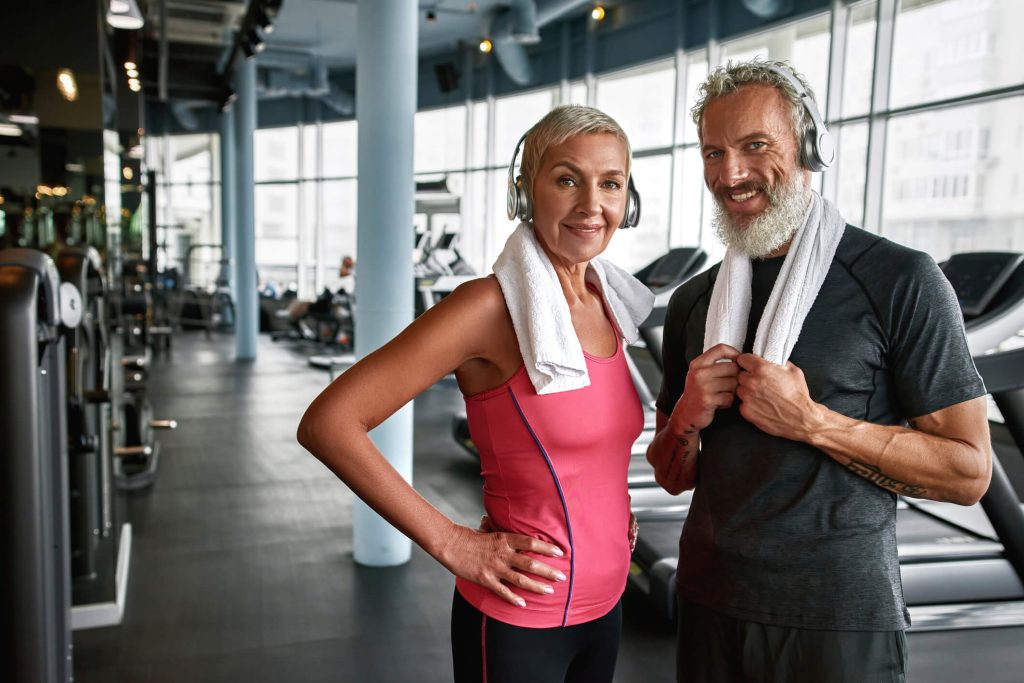

What is Anti Aging? 10 Aging drivers and how to address them
In this article, you will learn:
- The NEW Science of aging and why aging is a bigger threat than ever.
- Why aging is more reversible than at any point in human history.
- 10 hidden factors that drive the aging process and how to reverse each.

What happens during the aging process?
- Hormones like testosterone, estrogen, and growth hormone begin to decline
- Vital lean muscle mass and strength begin to deteriorate
- Energy, sex drive, and motivation drop
- Brain function fades
- Sleep quality worsens
- Metabolism slows down, which leads to gaining body fat
- All of these factors compound on top of each other and lead to degenerative health challenges and death
The great news is that you’ve got the power to change this. By implementing the Power moves throughout this series of articles, you’ll dramatically slow down all of these negative consequences of the aging process and even slow down aging.
What does it mean to slow down and reversing aging
Thanks to modern science, we can slow down aging dramatically. We can extend our health span by decades.
We define “healthspan” as the length of the biological body’s high performance. To be more specific, it’s strength, energy, vitality, sex drive, and more. It’s the health quality of your life.
If you follow the blueprints in this series of articles, barring any freak accidents, you can reverse aging and usher in the new youth paradigms such as: “80 is the new 50”, “100 is the new 60”, and “150 is the new 90”.
Lifespan is how long we live. We have already made tremendous progress in this area in the last two centuries. And we’re just getting started.
Normal aging vs. The BiOptimized lifestyle
As you can see in the graph above, lifespan was stuck in the 30s and 40s for centuries. Now we’re in the 70s and climbing. Contributors to this improvement came from advances in the medical system, antibiotics, improvements in economic prosperity, and more.
Eventually, advances in health technology will allow humans to live well into the 100s, maybe even the 200s, and beyond. Some people are shooting for biological immortality.
Biohackers and bioptimizers are a new breed of people. No long-term study has been done with people who are stacking all of these methods. However, using simple induction and deduction, it stands to reason that we can live a much longer lifespan than our ancestors who didn’t have this knowledge, health tech, and supplements.
The 10 Aging Drivers and How to Address them to slow aging
If we look at our DNA as software, we can state that it’s designed to have an awesome user experience until we get to our golden age. However, we have the power to upgrade the code thanks to epigenetics.
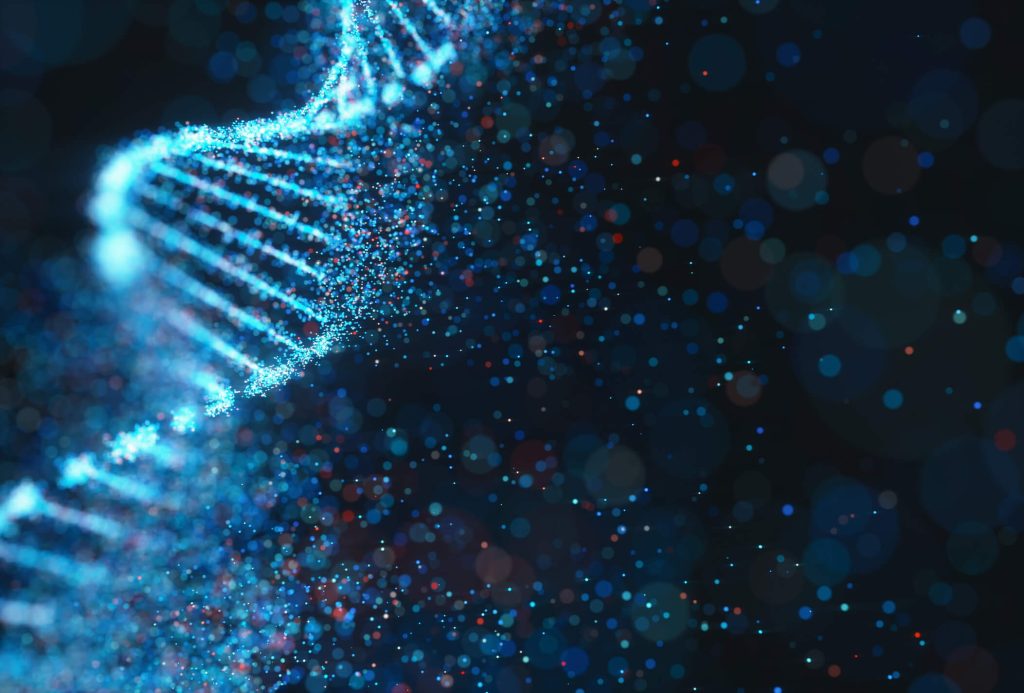
The 10 drivers of the aging process:
- Genomic Instability
- Telomere Attrition Epigenetic Alteration
- Loss of Proteostasis
- Deregulated Nutrient Sensing
- Mitochondrial Functioning
- Cellular Senescence
- Stem Cell Exhaustion
- Altered Intercellular Communication
- Enzymatic Depletion
It’s critical to note that the interlink and correlations between these aging drivers are very high. Some of them directly impact other aging drivers.
Aging Driver #1: Genomic Instability
Imagine a brick building. If one brick in a wall crumbles, the wall will still hold. If a few more bricks get destroyed, the wall will still stand. But when enough bricks crumble, the wall will fall. The same thing applies to the building. A building can lose a non-structural wall and stay standing. However, if enough structural walls fall, the building will come tumbling down.
In your body, your cells are like bricks. Your organs are the walls and your body is the building. Now, imagine that each year in certain cells’ DNA damage occurs. This then affects other cells and “the walls” will begin cracking. Eventually, the organs and body’s systems will decline and in time, stop functioning. It would be time to get your Last Rights read. At that point, the “building falls”, in other words, the body ceases to function.
What causes DNA damage?
There are two types of DNA damage:
- Damage that is caused by reactive oxygen species (ROS damage) that come from your metabolism
- Damage caused by outside sources such as radiation (UV, X-ray, gamma), chemicals, and viruses
How to address the DNA damage?
You can address the DNA damage by:
- Increasing the dietary antioxidants. Some of the foods that are high in antioxidants include broccoli, carrots, potatoes, spinach, cabbage, avocados, radish, lettuce, asparagus, artichokes, sweet potatoes, etc.
- Increasing NAD+ (nicotinamide adenine dinucleotide). It is a vital cofactor for PARP (poly-ADP ribose polymerase), which is a DNA repair enzyme.
- Exercising as it works by improving your cellular capacity to combat oxidative stress.
Using Nanovi machines as they work by reducing oxidative stress.
Aging Driver #2: Telomere Attrition
Telomeres are bits of DNA that are located at the ends of chromosomes. They help protect chromosomes from accidental fusion and DNA damage.
Just like making mixtapes with cassettes, copies become lower in quality as they are duplicated. Each time a cell divides, the DNA unwraps, and the information within is copied. Because of how cells divide, the telomere cannot be completely copied. A little bit gets cut off each time. It’s believed that over time as it copies, the telomeres become shorter and shorter until they are gone.
When telomere sequences are fully lost, so is the cell’s ability to replicate, rendering it less able to divide. Telomere exhaustion is thought to be one of the major contributors to cellular senescence, a.k.a. zombie cells.
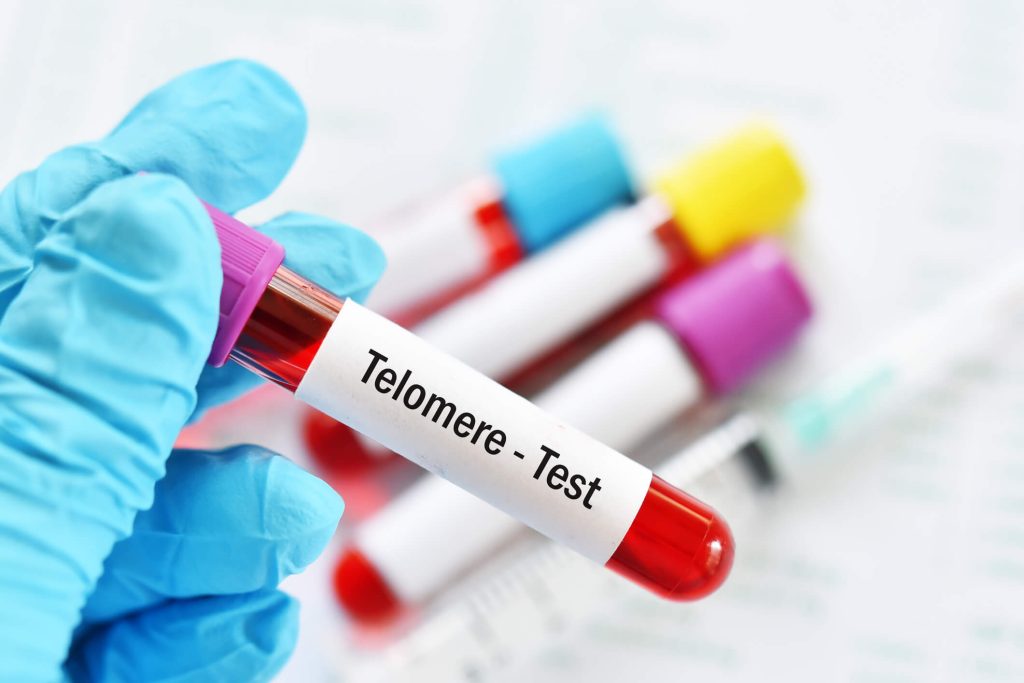
Powermove: Track Your Telomeres
A simple test that you can do to track the length of your telomeres is called Teloyears. It’s a simple, easy home test. We suggest doing it yearly to see if you’re bioptimization lifestyle is having an impact. It’s not uncommon to see major improvements in this arena.
Aging Driver #3: Epigenetic Alteration
Before the understanding of epigenetics, everyone believed that genetics put everyone on a predestined fate. Your genes were your future. Now we know that’s not the case.
Genetics certainly increases or decreases the probability of certain things happening. And yes, understanding your genetics is one of the most empowering things you should do to maximize your health.
Here’s the great news: you have an incredible level of control over your genetic expression. Many of our genes are either: ON or OFF, while some are in-between. In our pursuit of Biological Optimization, the goal is to turn on the good genes and turn off the bad ones.
You might think of DNA as version 1.0 of your code and epigenetics allows you to upgrade it. The key here is to understand that you’re in far greater control of the commands your DNA receives than you might think.
How Epigenetic Alterations Accumulate
If we send “bad signals”, meaning they aren’t helping our health, these negative changes in the genome accumulate over time and have been correlated with the decline observed in aging cells.
Alterations to gene expression patterns are an important influencer of aging. Aging can cause changes to our epigenome, eventually compromising our cell’s function.
An epigenome consists of a record of the chemical changes to your DNA.
Inflammation is involved in epigenetic alterations. Metabolism and epigenetic alterations are closely linked with inflammation, creating a feedback loop leading to a vicious cycle. This is one of the main drivers of metabolic syndrome, which is one of the leading health problems today.
Spirituality and Your Health
Does spirituality impact your health? The research says that people who are involved in regular volunteer services and who pray regularly have:
- Reduced stress
- Improved functioning of the immune system
- More sense of joy, peace, and well being
Powermove: Be of Service
Make “giving your time” and spirituality a part of your life. Coach and mentor eager younger people FOR FREE. Go help a food shelter. Go clean up the beach, parks, and ditches. Meditate and pray.
Exercise for Epigenetics
Physical exercise, both aerobic and resistance, can positively influence your epigenetics.

Endurance exercise training induces several adaptations in skeletal muscle, the most important of which is an increase in mitochondria with an improvement in respiratory capacity. Some epigenetic modifications that possibly occur due to physical exercise can have a positive effect on restoring the genomic stability in cells with carcinogenic (cancer-causing) potential.
Aging Driver #4: Loss of Proteostasis
The human body contains around 20,000 different proteins including 7,000 peptides. The maintenance and management of these proteins is called “proteostasis”. These proteins and peptides do very specific functions in the body. When these functions decline in potency, it can lead to other health problems.
Proteostasis ensures that the proteins and peptides are produced and folded appropriately before they travel to their target location in the body. Proteostasis stabilizes your proteins and keeps your cells properly functioning.
Cellular proteostasis is key to:
- Ensuring successful development
- Healthy aging
- Resistance to environmental stresses
- Minimize the damage by pathogens such as viruses
Molecular Chaperons: Heat Shock Proteins
One of the things that help with proteostasis is the activation of heat shock proteins (HSP).
HSPs function as molecular chaperones that facilitate the synthesis and folding of proteins. These chaperones then act by protecting the proteins from further misfolding and promote either repair or degradation of damaged proteins. These proteins repair your muscles and organs and create critical neurotransmitters for optimal brain function.
Powermove: Sweat in the Sauna
This Powermove can easily be achieved by spending 15 to 30 minutes in a hot sauna 3-6 times a week.
Aging Driver #5: Deregulated Nutrient Sensing
Your body has built-in sensors to detect certain nutrients. These sensors become less functional as we age. The four associated key protein groups are IGF-1, mTOR, sirtuins, and AMPK. We call these proteins “nutrient-sensing” because various nutrient levels influence their activity.
The GH/IGF Axis
IGF is an acronym for “insulin-like growth factors”. IGF-1 is primarily controlled by GH levels in the body. They operate on an axis, meaning they influence
each other.
IGF is a potent enhancer of aesthetics, performance, and healthspan.
mTOR: The Anabolic Activator
mTOR is a champion regulator of anabolic metabolism, the process of building new proteins and tissues. Both mTOR and the IGF are part of the anabolic side of metabolism.
Powermove: Consume Leucine (or 20 – 30 g of protein) Before Each Meal
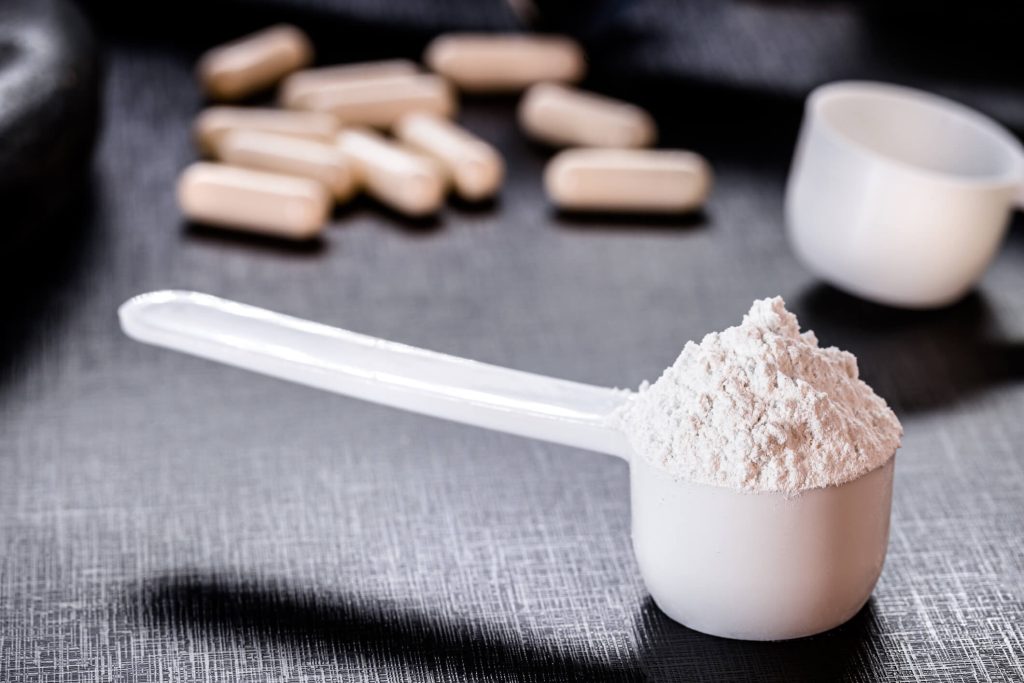
The mTOR activating amino acid, Leucine, has been shown in research to be extremely effective at activating mTOR. Three to seven grams per meal will improve anabolism. This is a powerful tool for anyone seeking to improve lean muscle mass and athletic performance.
Sirtuins
The sirtuin genes are believed to be one of the most promising longevity genes. There are seven sirtuins in mammals, SIRT1 to SIRT7, and they are made by almost every cell in the body.
Sirtuins can reduce inflammation that drives diseases such as:
- Atherosclerosis
- Metabolic disorders
- Ulcerative colitis
- Arthritis
- Asthma
Exercise is one of the main ways to boost sirtuin expression.
AMPK
AMPK plays a role in cellular energy homeostasis, largely to activate glucose and fatty acid uptake and oxidation when cellular energy is low. When you’re fasting or low on calories, AMPK goes up.
In summary, there are four key proteins involved in nutrient sensing that might be key contributors to aging. Turning down the pathways of the first two, IGF-1 and mTOR, promotes longevity. In states of calorie and protein abundance, these two increase anabolism.
Conversely, AMPK and sirtuins increase with nutrient scarcity. They are believed to help with longevity. Multiple studies have demonstrated that caloric restriction can slow the aging decline.
Powermove: Fasting
Fasting is one of the most powerful ways to improve overall health. There are many forms of fasting. Starting with a 1-day fast is an easy place to start. Doing a 3-day fast once a month or once a quarter has been shown to have powerful regenerative effects on the immune system.
Aging Driver #6: Mitochondrial Functioning
Mitochondria are the little energy factories inside your cells. They produce ATP which is what your body uses for fuel.
The problem is that mitochondria die and become weaker with age unless you stress them the positive stressors and feed them properly.
A decline in mitochondrial quality and activity has been associated with normal aging and correlated with the development of a wide range of age-related diseases.
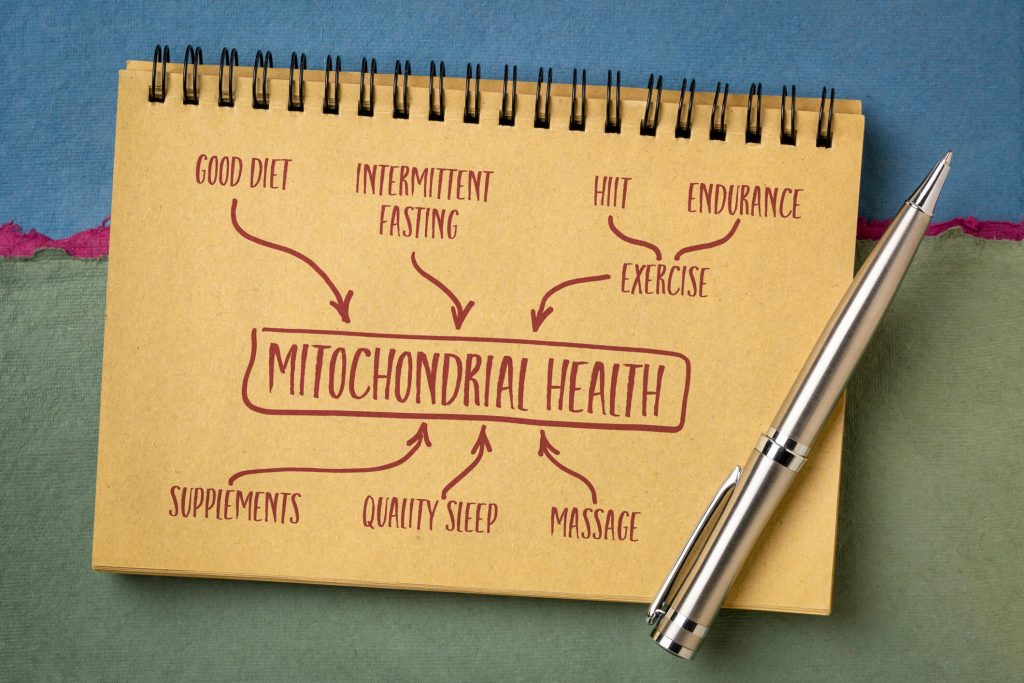
Mitochondria as Regulators of Stem Cell Function
It is believed that mitochondria might be an important regulator of stem cells. A decline in adult stem cell function is thought to contribute to various aspects of aging.
Mitochondria and Cellular Senescence
It is believed that mitochondria play a role in managing cellular senescence.
Mitochondria and Inflammation
There seems to be a strong connection between mitochondrial function and inflammation.
Powermove: HIIT and Mitochondria
One of the most powerful ways to boost mitochondria is high-intensity interval training (HIIT workout). It’s a wise move to incorporate 1 or 2 HIIT workouts a week into your lifestyle.
Powermove: Cold Therapy and Mitochondria
There is evidence that cold therapy improves mitochondrial health through a process known as “mitochondrial biogenesis,” or in other words, by producing more of them.
Boost your mitochondria by ending your hot showers with 30 seconds of water as cold as you can tolerate.
Aging Driver #7: Cellular Senescence
“Zombie cells”, known as cellular senescence are the decrepit cells in your body that create chaos.
Cellular senescence is when cells can no longer divide. The inability of senescent cells to proliferate can impair tissue regeneration after injury, causing prolonged or permanent tissue damage with age.
Although senescent cells can no longer replicate, they remain metabolically active and become pro-inflammatory.
Powermove: Eliminate Senescent Cells
Metformin is one of the most well-researched and promising anti-aging drugs currently known. It is commonly used for managing blood sugar with diabetes. Metformin fights cancer and increases lifespan in both rodents and human cells by reducing senescence.
The one caveat is that metformin depletes vitamin B12, so make sure to add some methylcobalamin (methylated b-12) to your supplement stack. You may also want to cycle on and off of metformin. Consult with your doctor.
Aging Driver #8: Stem Cell Exhaustion
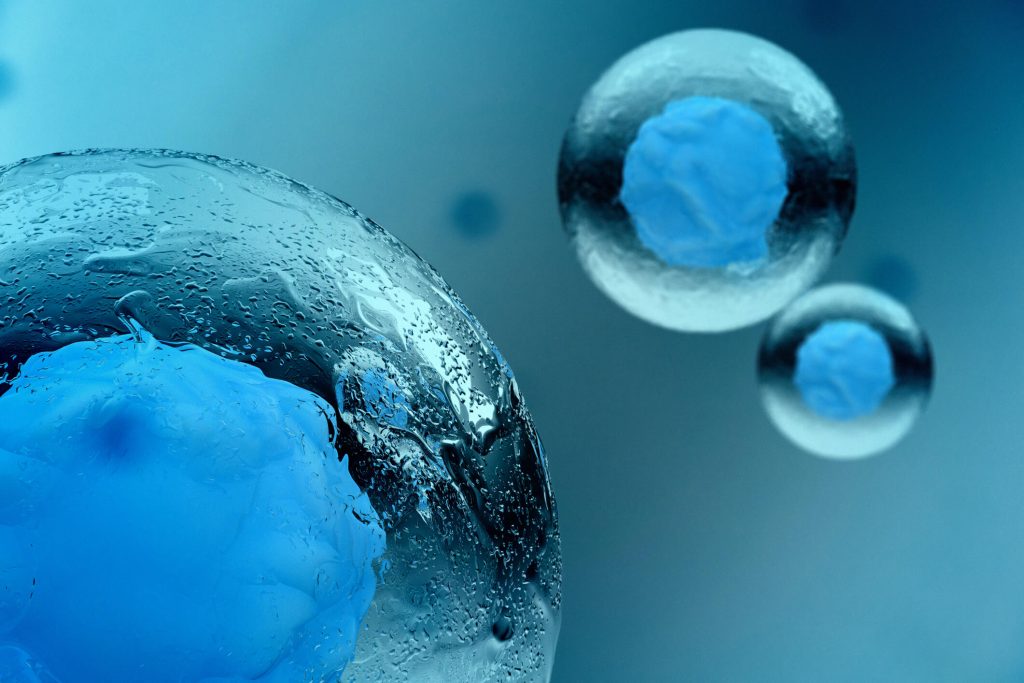
Stem cells are special human cells that can transform into many different cell types. This can range from muscle cells to brain cells.
Stem cells provide new cells for the body as it grows, and replace specialized cells that are damaged or lost. They have two attributes that make them do this:
• They can divide over and over again to produce new cells.
• As they divide, they can transform into the other types of cells that make up the body.
Stem cells are one of the most important cellular repair systems in your body. As we get older, stem cells become depleted. Stem cell exhaustion is observed in virtually all tissues.
As we get older, the activity of our stem cells slowly decreases for a few reasons:
- Pro-inflammatory, immunosuppressive chemicals constantly secreted by senescent cells
- Direct damage and destruction: for instance, telomere shortening, can lead to stem cells losing function and becoming senescent
A reduction in stem cell activity can lead to many diseases and general issues, such as:
- Immunosuppression through reduced production of bacteria-killing and virus-killing white blood cells
- Muscle loss
- Frailty
- Weakening of bones.
Powermove: Boost Stem Cells Naturally
There are a few things you can do to boost stem cells naturally:
- Intermittent fasting
- Get great sleep
- Although the work is preliminary, there is data that the polyphenols and antioxidants found in blueberries, green tea, pomegranates, goji berries, and even spirulina can increase circulating bone-marrow-derived stem cells.
- Short bouts of acute exercise can increase stem cells in the circulation.
Powermove: Stem Cell Therapy
One of the most promising areas of research is stem cells. Based on early data, and anecdotal evidence it might be one of the most powerful anti-aging treatments available.
Aging Driver #9: Altered Intercellular Communication
Cells communicate with each other back and forth sending signals.
For everything to work in harmony, everything from cells to organs needs strong communication capabilities to function properly.
As we age, the signaling environment of chemical messages across the whole body tends to
become more inflammatory, inhibiting the immune system and potentially causing muscle wasting, bone loss, and other harmful effects in a process known as inflammaging.
We believe that one of the keys to improving cellular intercommunication is optimal levels of every macro and micro mineral in the body.
Powermove: Optimize Your Mineral Levels
Use multivitamins and minerals to supply your cells with all the vitamins and minerals they need to operate at their best.
Consult with your medical experts if you have high blood pressure or other health concerns before starting any new supplement or health protocol.
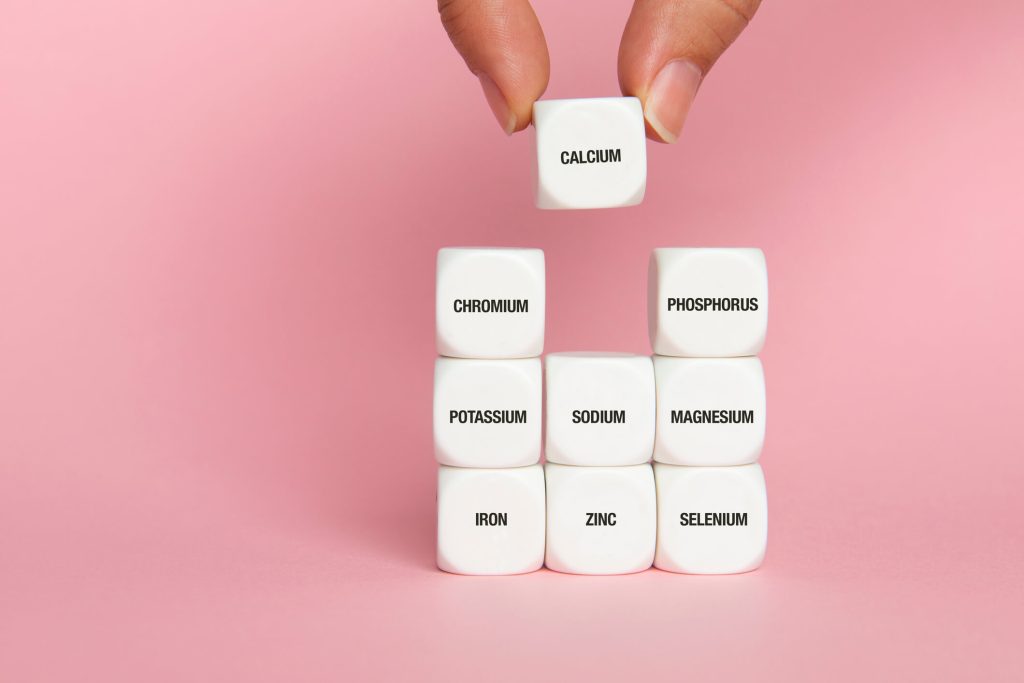
Aging Driver #10: Enzymatic Depletion
Enzymes do over 25,000 different functions in the human body: everything from thinking to blinking.
Edwards Howell theorized that humans have an enzyme bank account that gets depleted as we get older. This leads to a negative cycle of effects.
First, this leads to less protein breakdown which means the body gets fewer amino acids. Eventually, certain functions in the body decline and then cease. Then this creates another negative cascade of events that can lead to serious health issues.
That’s why we’re such big proponents of enzymes and other digestive aids. They are some of the biggest game-changers anyone can consume to improve their healthspan and lifespan.
Powermove: Consume Potent Proteolytic Enzymes
We also believe that consuming lots of proteolytic enzymes on an empty stomach is a powerful anti-aging solution for various reasons.
First, they will break down undigested proteins in your digestive tract and blood. They can also clear debris from immune responses and healing processes.
References
- López-Otín C, Blasco MA, Partridge L, Serrano M, Kroemer G. The hallmarks of aging. Cell. 2013;153(6):1194-1217. doi:10.1016/j.cell.2013.05.039
- Ntanasis-Stathopoulos J, Tzanninis JG, Philippou A, Koutsilieris M. Epigenetic regulation on gene expression induced by physical exercise. J Musculoskelet Neuronal Interact. 2013;13(2):133-146. Accessed July 12, 2022. https://pubmed.ncbi.nlm.nih.gov/23728100/
- Powers ET, Morimoto RI, Dillin A, Kelly JW, Balch WE. Biological and chemical approaches to diseases of proteostasis deficiency. Annu Rev Biochem. 2009;78(1):959-991. doi:10.1146/annurev.biochem.052308.114844
- Balch WE, Morimoto RI, Dillin A, Kelly JW. Adapting proteostasis for disease intervention. Science. 2008;319(5865):916-919. doi:10.1126/science.1141448
- Frye RA. Phylogenetic classification of prokaryotic and eukaryotic Sir2-like proteins. Biochem Biophys Res Commun. 2000;273(2):793-798. doi:10.1006/bbrc.2000.3000
- Quijano C, Cao L, Fergusson MM, et al. Oncogene-induced senescence results in marked metabolic and bioenergetic alterations. Cell Cycle. 2012;11(7):1383-1392. doi:10.4161/cc.19800
- Chung N, Park J, Lim K. The effects of exercise and cold exposure on mitochondrial biogenesis in skeletal muscle and white adipose tissue. J Exerc Nutrition Biochem. 2017;21(2):39-47. doi:10.20463/jenb.2017.0020
- Hosono K, Endo H, Takahashi H, et al. Metformin suppresses colorectal aberrant crypt foci in a short-term clinical trial. Cancer Prev Res (Phila). 2010;3(9):1077-1083. doi:10.1158/1940-6207.CAPR-10-0186
- Memmott RM, Mercado JR, Maier CR, Kawabata S, Fox SD, Dennis PA. Metformin prevents tobacco carcinogen–induced lung tumorigenesis. Cancer Prev Res (Phila). 2010;3(9):1066-1076. doi:10.1158/1940-6207.CAPR-10-0055
- Fang J, Yang J, Wu X, et al. Metformin alleviates human cellular aging by upregulating the endoplasmic reticulum glutathione peroxidase 7. Aging Cell. 2018;17(4):e12765. doi:10.1111/acel.12765
- Martin-Montalvo A, Mercken EM, Mitchell SJ, et al. Metformin improves healthspan and lifespan in mice. Nat Commun. 2013;4:2192. doi:10.1038/ncomms3192
- Reinstatler L, Qi YP, Williamson RS, Garn JV, Oakley GP Jr. Association of biochemical B₁₂ deficiency with metformin therapy and vitamin B₁₂ supplements: the National Health and Nutrition Examination Survey 1999-2006. Diabetes Care. 2012;35(2):327-333. doi:10.2337/dc11-1582
- Ren R, Ocampo A, Liu GH, Izpisua Belmonte JC. Regulation of stem cell aging by metabolism and epigenetics. Cell Metab. 2017;26(3):460-474. doi:10.1016/j.cmet.2017.07.019
- Zhang J, Lazarenko OP, Blackburn ML, et al. Feeding blueberry diets in early life prevent senescence of osteoblasts and bone loss in ovariectomized adult female rats. PLoS One. 2011;6(9):e24486. doi:10.1371/journal.pone.0024486
- Mikirova NA, Jackson JA, Hunninghake R, et al. Nutraceutical augmentation of circulating endothelial progenitor cells and hematopoietic stem cells in human subjects. J Transl Med. 2010;8(1):34. doi:10.1186/1479-5876-8-34
